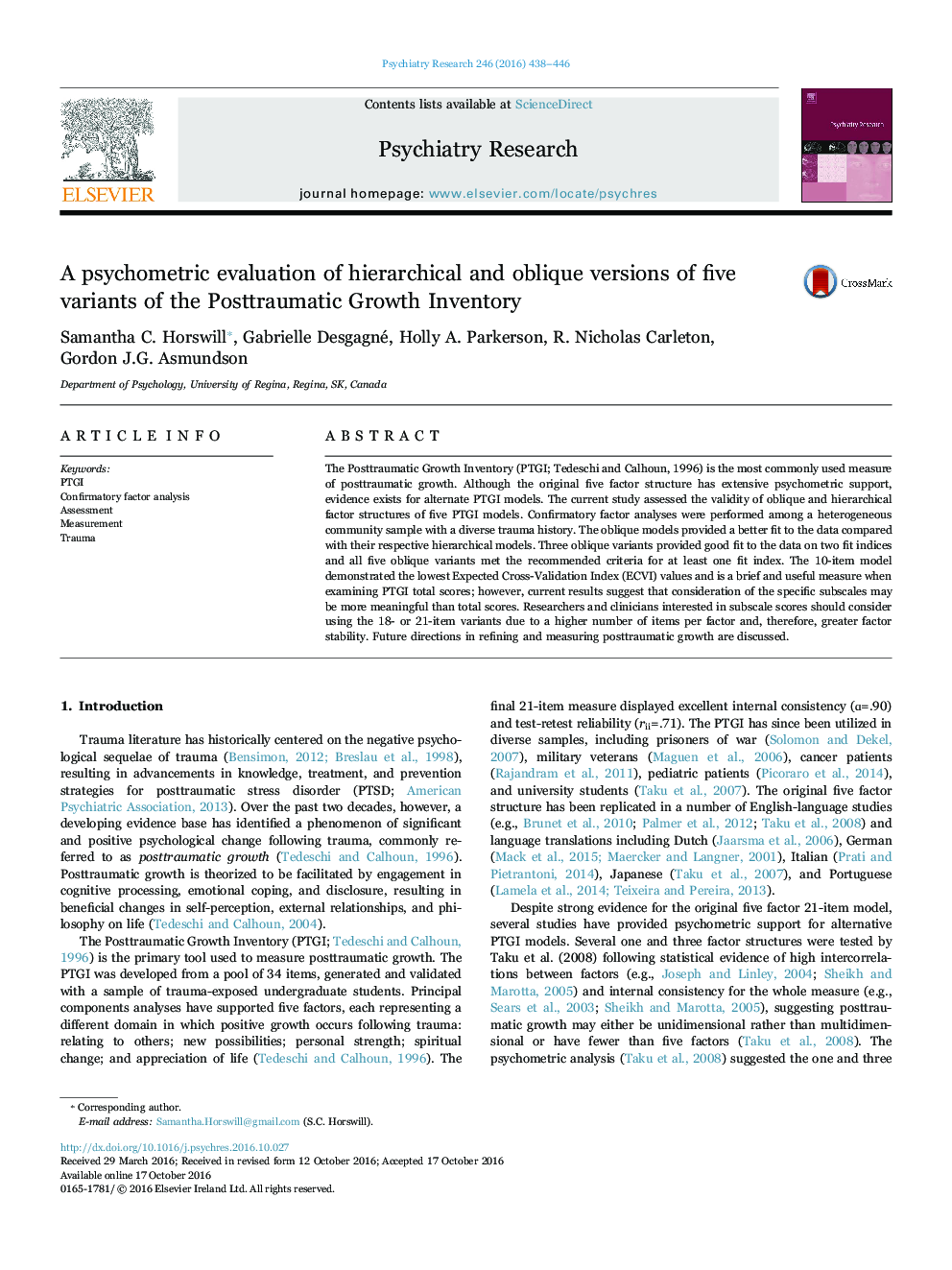| Article ID | Journal | Published Year | Pages | File Type |
|---|---|---|---|---|
| 4933816 | Psychiatry Research | 2016 | 9 Pages |
Abstract
The Posttraumatic Growth Inventory (PTGI; Tedeschi and Calhoun, 1996) is the most commonly used measure of posttraumatic growth. Although the original five factor structure has extensive psychometric support, evidence exists for alternate PTGI models. The current study assessed the validity of oblique and hierarchical factor structures of five PTGI models. Confirmatory factor analyses were performed among a heterogeneous community sample with a diverse trauma history. The oblique models provided a better fit to the data compared with their respective hierarchical models. Three oblique variants provided good fit to the data on two fit indices and all five oblique variants met the recommended criteria for at least one fit index. The 10-item model demonstrated the lowest Expected Cross-Validation Index (ECVI) values and is a brief and useful measure when examining PTGI total scores; however, current results suggest that consideration of the specific subscales may be more meaningful than total scores. Researchers and clinicians interested in subscale scores should consider using the 18- or 21-item variants due to a higher number of items per factor and, therefore, greater factor stability. Future directions in refining and measuring posttraumatic growth are discussed.
Related Topics
Life Sciences
Neuroscience
Biological Psychiatry
Authors
Samantha C. Horswill, Gabrielle Desgagné, Holly A. Parkerson, R. Nicholas Carleton, Gordon J.G. Asmundson,
